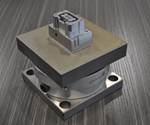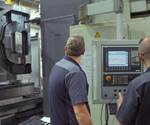How to Design and Analyze the Right Clamping System
The use of innovative clamping systems to optimize the moldmaking production process requires consideration of five factors based on Industry 4.0 principles.
The use of innovative clamping systems to optimize the moldmaking production process requires consideration of five factors based on Industry 4.0 principles.
1. Engineering: Engineers should be fully involved and invested in the process of workholding. The clamping setups should be established before the workpiece is clamped and secured to save time and confusion at the CNC machine table.
2. Clamping: Modular and standardized clamping systems should be available in both manual and automatic versions for all clamping needs and production equipment. A clamping system should establish the exact location of a work part, whether in manual or automation setups. There are many zero-point systems available, but a shop must consider the adaptability of the system for a full range of workpiece sizes.
3. Motion: Automatic handling and storage systems for workpiece products and production equipment, and toolchanger and pallet changer technologies will eventually be used in a shop’s production process, so it is vital to ensure a smooth transition when integrating a workholding system into these automation systems. Implementing a smart workholding system changes the moldmaking workflow into a standardized production process. Standardizing the process eases the integration of automation.
With the influx of five-axis CNC machines continuing in mold manufacturing, the ability to machine all five sides of a workpiece should also be considered before investing in a workholding system solution. For example, the workholding system should be modular to allow multiple configurations for all necessary machining processes, such as vertical milling, horizontal milling, EDM and wire cutting operations.
4. Control: Without a flexible control software system for managing the production process, the achieved gains from the clamping solution will be nullified. The goal is to run lights-out during unattended shifts at night and on weekends.
5. Online Support: The ability to find and obtain instant access to product information is critical, so a connection to a customer support area from their website is vital.
These five considerations establish an argument for investing in “smart” or Industry 4.0-enabled technology that offers quick clamping, thereby reducing setup times. A smart system knows locations, eliminating the time needed for probing the workpiece location. It also offers permanent references for rework, design changes and changeovers due to small errors.
For More Information
About The Contributor
Peter Hoenig is FCS North America product and application manager.
Related Content
-
Advantages and Disadvantages of Copper and Graphite Electrodes
Both copper and graphite provide approximately the same end result, so it is important for a shop to consider the advantages and disadvantages of each material in order to discover what would work best in their shop floor environment.
-
6 Ways to Optimize High-Feed Milling
High-feed milling can significantly outweigh potential reliability challenges. Consider these six strategies in order to make high-feed milling successful for your business.
-
Fundamentals of Designing the Optimal Cooling System
The right mold components can help improve mold cooling and thereby produce higher-quality parts.














